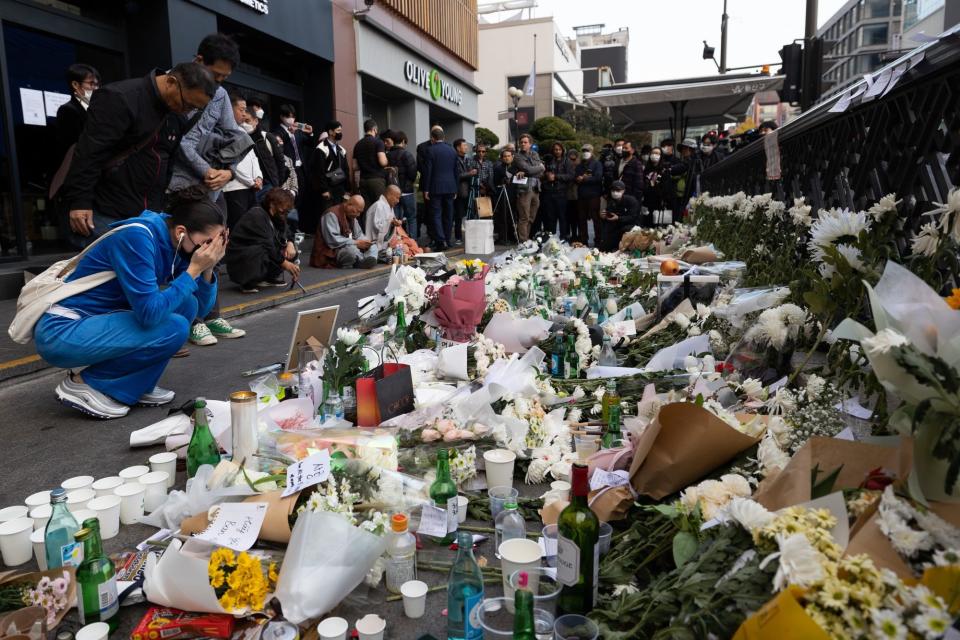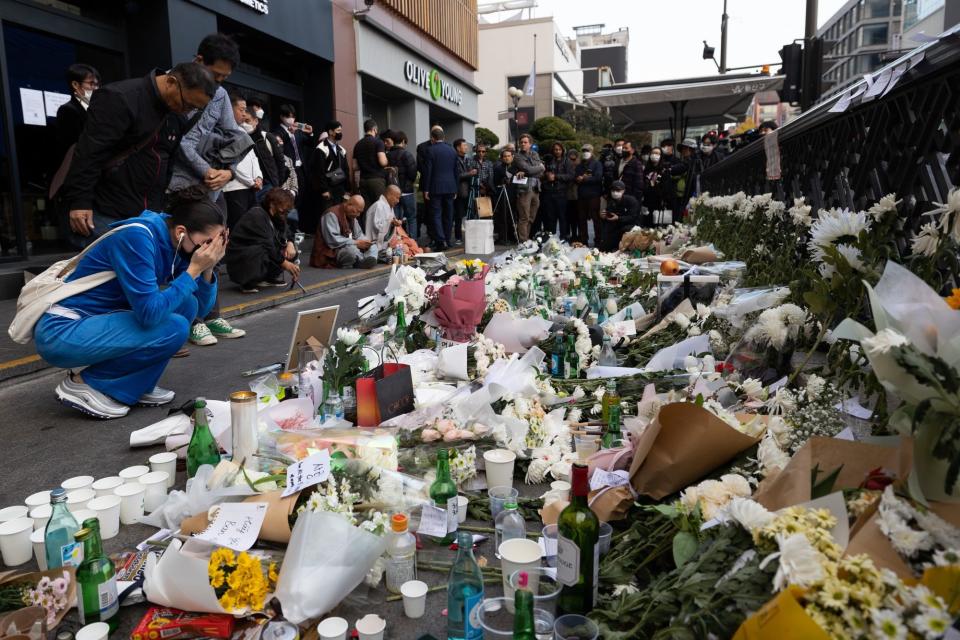Extreme Overcrowding Alone May Have Triggered Seoul Tragedy
(Bloomberg) -- As South Korea investigates its deadliest civilian crowd crush incident, experts say the density of people packed in a narrow and restricted alley may have reached a level that made such a disaster almost inevitable.
Most Read from Bloomberg
Chief Justice Temporarily Stops Release of Trump Tax Returns
Lottery Winner Keeps $30 Million Jackpot Secret From Wife and Child
Democrats Prepare for Loss of Congress as Voters Break Late to GOP
China Markets Rally After Unconfirmed Social Posts on Reopening
Speculation has swirled on social media about who or what exactly triggered the crush that killed 155 people, but a culprit may have been the gradual buildup of people who came to celebrate Halloween in the nightlife district of Itaewon and found themselves trapped in a space where they were pressed so hard by those around them that they had trouble controlling their body movements.
“By the time you think that you are no longer in control, it is usually too late to get out of the space because it is essentially not offering you any escape route,” said Milad Haghani, a senior lecturer at the School of Civil and Environmental Engineering of the University of New South Wales in Australia.
A density of about five people per square meter may feel cramped but manageable. Once the number goes to about 8 to 9 per square meter and beyond, the situation can become dangerous.
Haghani, an expert on crowd behavior and emergency preparedness, said once that density is reached, the crowd becomes unstable and can lose control. People are essentially helpless. Turbulence occurs on its own and doesn’t require any misbehavior from people in the mass.
“If one person falls at one point in the crowd, that might create a shock wave that propagates through the crowd and results in many people falling on each other involuntarily,” he said.
Forces generated by crowd surges have been strong enough to bend steel bars, and the main cause of death is often asphyxiation.
“Crowd forces can reach levels that almost impossible to resist or control,” wrote Keith Still, an expert on crowd safety and a visiting professor at the University of Suffolk in England. People fall against each other like dominoes and the forces get amplified as more people go down, creating extreme pressure, he added.
Itaewon’s bars and nightclubs are popular with foreign tourists and US military staff, and the area started attracting revelers on Halloween about a decade ago, although such gatherings hadn’t taken place in recent years due to Covid-19. About 140 officers were deployed to Itaewon to mark its first large-scale festivities in three years. Most of the officers were there mainly for crime prevention among a crowd estimated at about 100,000 people.
Witnesses and media reports indicate that as people squeezed into the 3.2-meter (10.5-feet) wide alley, some began to fall, causing others to tumble and pile into one another.
The alley was located near an exit for a subway station and has been a heavily used passage for pedestrian traffic moving between a main street in Itaewon and the restaurants, bars and nightclubs on the other side.
“It was foreseen that a large number of people would gather there. But we didn’t expect that large-scale casualties would occur due to the gathering of many people,” Hong Ki-hyun, chief of the National Police Agency’s Public Order Management Bureau, was quoted Monday by Yonhap News Agency as saying.
President Yoon Suk Yeol called on the government to come up with crowd control systems for events like the Halloween festivities in Itaewon that don’t have any specific organizer but draw masses of people.
One of the country biggest newspapers, the Chosun Ilbo, said in an editorial that authorities should have had better safety measures in place, knowing that crowds would be large. According to the Seoul Metro, a total of 130,131 passengers used the Itaewon subway station on the day of the incident, compared to 96,845 at the last major Halloween event there in 2019.
In neighboring Japan, about 350 officers were deployed to Halloween festivities in the nightlife district of Shibuya that attracted about 40,000. Many were there for crowd control, including some dubbed “DJ Police” who stand on platforms with microphones and loud speakers to encourage people to abide by street safety rules.
A paper published for the Australian Institute of Criminology said a good rule of thumb is to have about one crowd control official for about every 100 people, but there is no fixed formula for allocating police and security resources at public gatherings.
With the worst of the coronavirus pandemic seen over, crowds have started to gather again, leading to some deadly incidents around the world. These have included a rush to exits at an Indonesian soccer match in October triggered by police firing tear gas that left 125 people dead. In November 2021, there was a crush of concert goers at the Astroworld Festival in Houston that left 10 people dead.
Crowd crushes have happened before in South Korea. In 2005, 11 people were killed in Sangju city when masses rushed into a concert venue.
Haghani advises authorities to keep an eye online, using live videos feeds, software and professionals who can monitor crowd formations.
“As soon as you see this density happening, there should be an interruption to the inflow of the people into the restricted space,” he said.
--With assistance from Seyoon Kim and Philip Glamann.
(Updates with latest death toll and details.)
Most Read from Bloomberg Businessweek
Yeezy Roller Coaster Ended With Two-Minute Phone Call at Adidas
These Five Women Are Helping Doctors Crack the Long-Covid Mystery
Can an Election-Denial Alliance Save Republican Senate Hopes in Arizona?
A Glimmer of Hope in the Quest for a Nonaddictive Painkiller
©2022 Bloomberg L.P.



